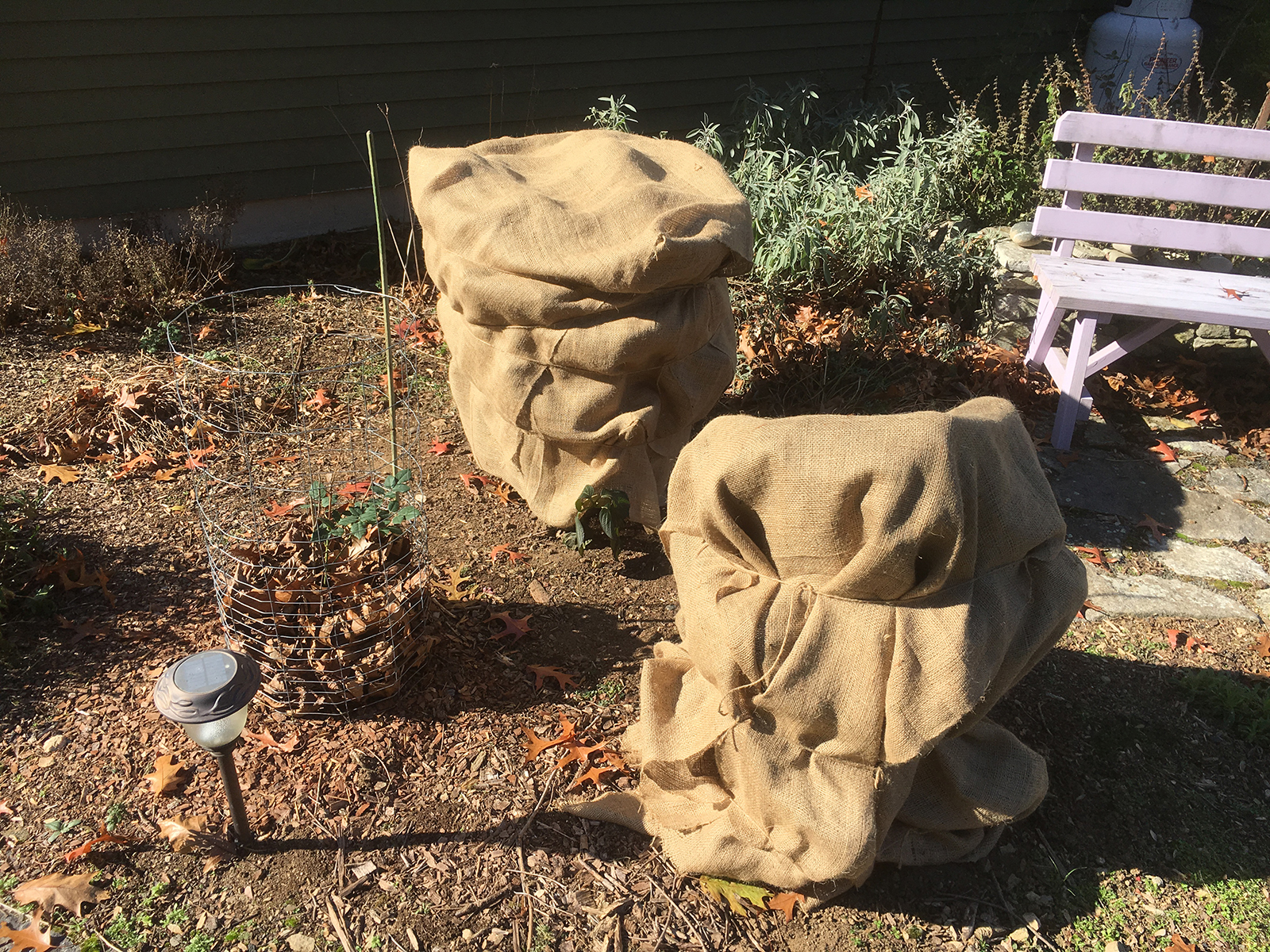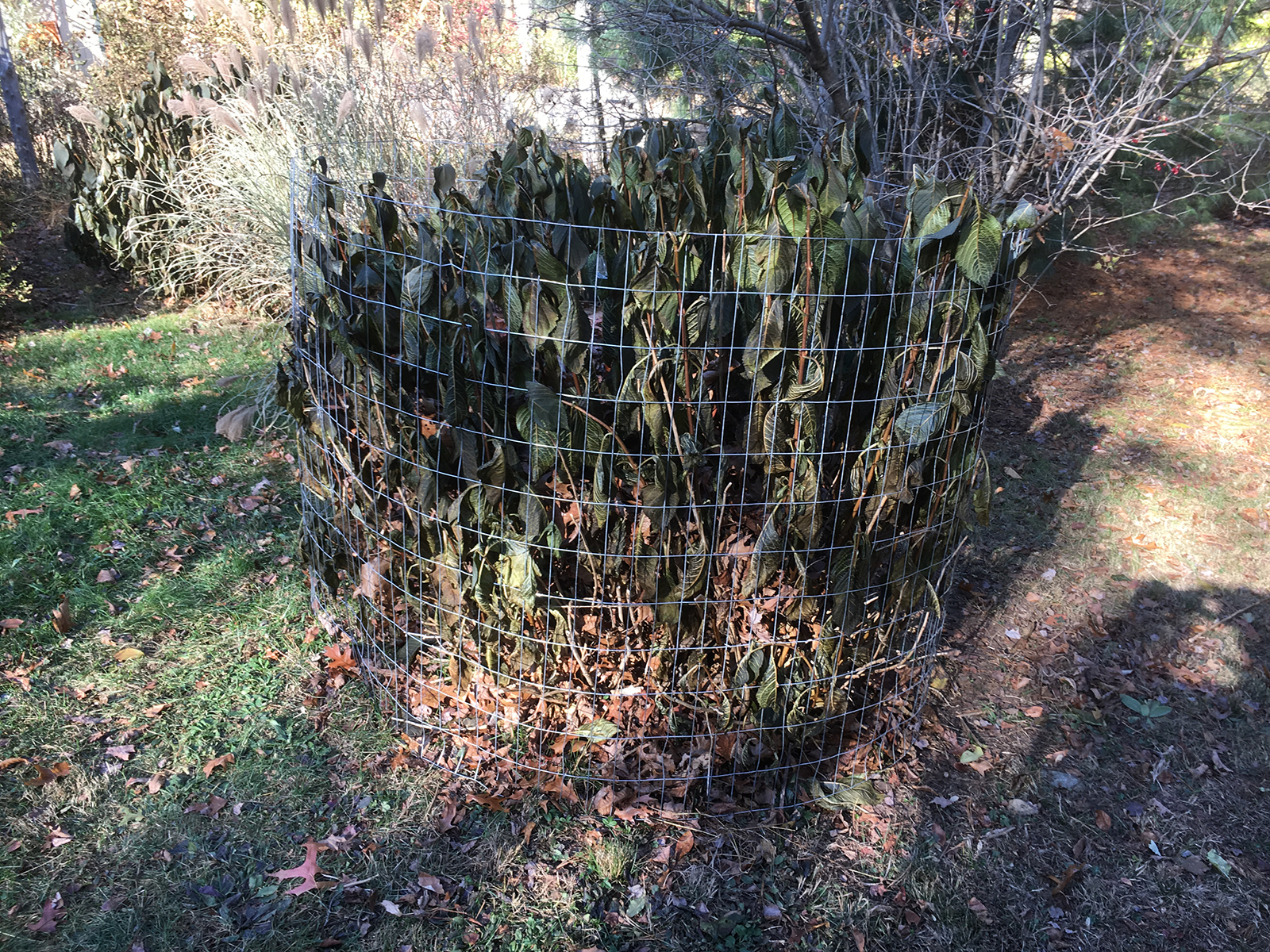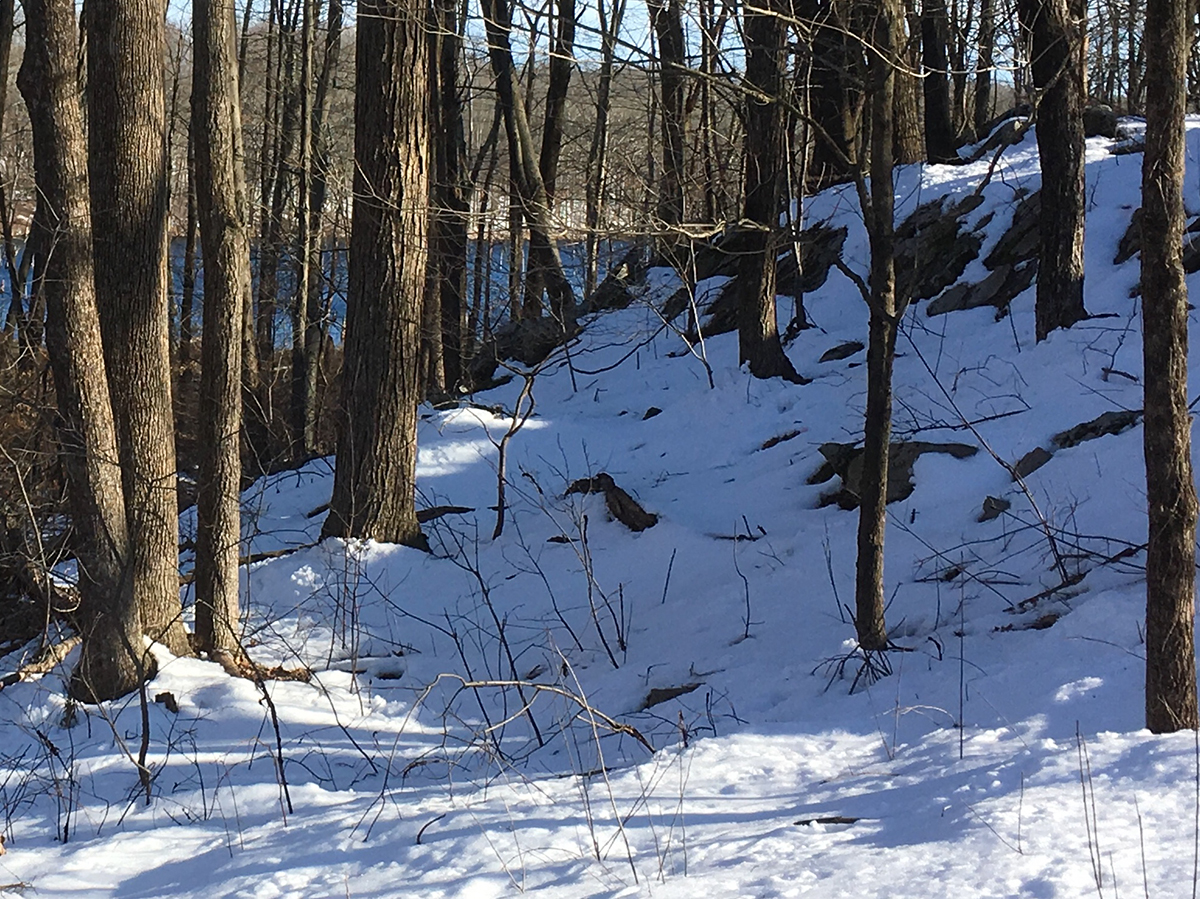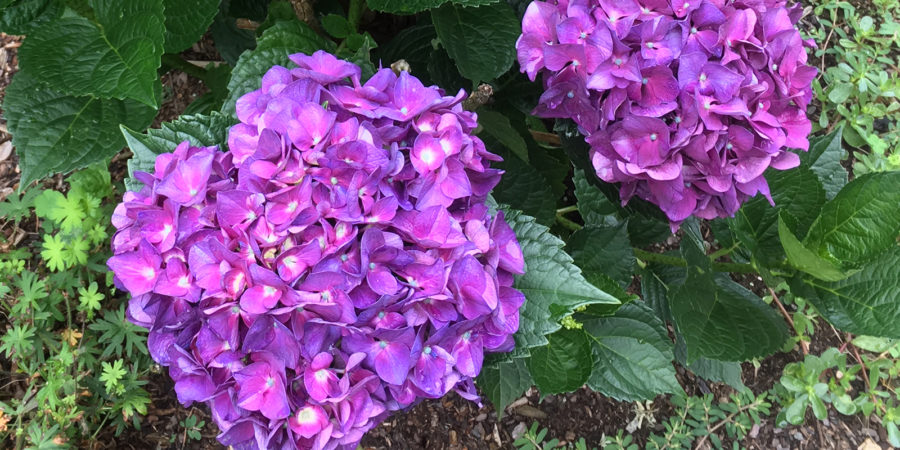Missing perennials, winter kill on shrubs or an unexpected new arrival in one of our flower beds — these are examples of our spring garden surprises. The winters in Western Connecticut can be harsh on perennials and shrubs. It’s the first week of April, and more snow is predicted in the coming week. Plants that are supposed to survive in our area (according to their regional number) often do not. Spring garden surprises are the norm here.
Protection often dictates whether a plant will bloom, or even survive the winter. Our hydrangeas are a perfect example. We have both Nikko Blues and two smaller hybrid varietals. Over the years we’ve found that unprotected buds die in the winter. The large leaves provide a great backdrop for other flowers and blooming shrubs, but we all plant hydrangeas for their large, beautiful flower heads. We wrapped several of our Hydrangeas in burlap this winter and circled one with a screen filled with oak leaves. We’re waiting anxiously to see if our efforts will result in flowers.


We have two hybrid tea rose varieties that I’ve protected both with screens and leaves. Butterfly bushes that grow large and bloom tremendously one year can struggle to survive the next due to winter kill. Only one Orange Eye remains out of four we planted years ago.
FACT: The impact of nonnative plants is creating novel ecosystems that are not supporting food webs, therefore not supporting biodiversity. Although beautiful, Butterfly Bushes are not a native species.
Hardy perennials, such as Black-eyed Susans, Coneflowers, Shasta Daisies, Bee Balm and Phlox get through most winters just fine. The biggest worry with these plants are the Voles and White-footed Mice that can devour their roots during the winter months. Gayfeathers (Liatris), haven’t tolerated our winters well. It’s disappointing because their flowers are great attractors for bees, butterflies and birds.
Lavenders also struggle in our region. Our patio was once filled with these gorgeous plants providing a great scent and plenty of dark purple flower heads. We’re now down to two plants that seem to have found just the right spots in the yard — plenty of sun, proper drainage and protection from the wind.

Two years ago we planted a few Agastache (Hummingbird Mint) throughout the yard. These are colorful plants (when mature) that attract Hummingbirds. They supposedly do well in a dry, sunny location. Although said to be hardy enough for our area they have struggled to take hold. We placed evergreen bows over them this winter for the first time. It will give them protection against the cold and wind but with the recent snow I’m wondering if it will result in too much moisture for them. We’ll see.
When the snow finally stops I’ll begin cleaning up the flower beds. Raking away the dead stalks and seed heads I left for the wintering birds will allow this year’s growth to come in more easily. I’m hoping that most, if not all, of the plants have survived the winter. But, I’m ready to adjust to the surprises Mother Nature has in store for us.
OBSERVATION: The Cotoneaster has taken an unusually tough beating this winter showing a lot of winter kill. Although it seems there is more than I ever remember, I’m confident this hardy shrub will fill in quickly with new growth. Its’ low, thick structure makes a great hiding place for rabbits, chipmunks and many other critters.
